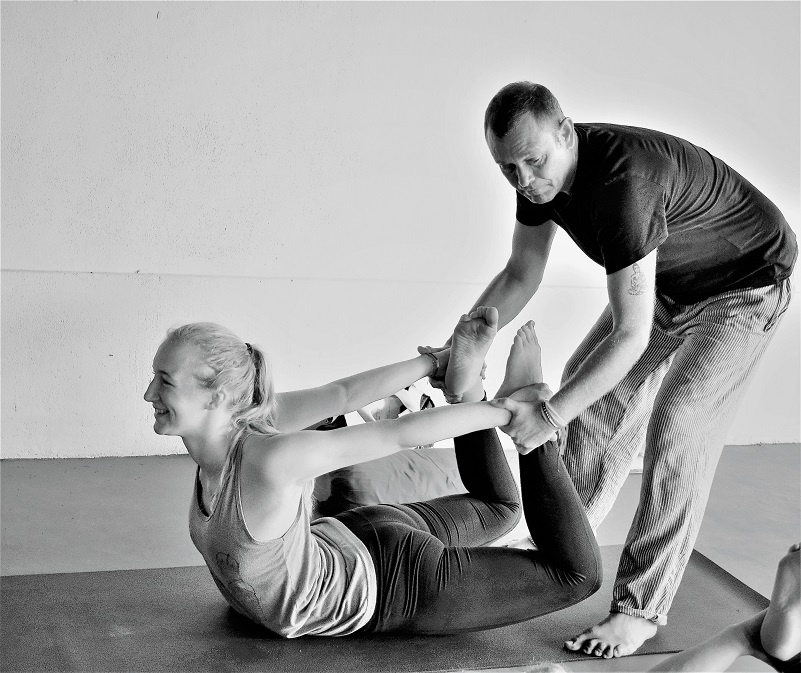One of the areas of specialized yoga teacher training is working with students who have neurological disorders. While the list of neurological orders is long, strokes are one of the most common problems. A stroke can affect many portions of the brain responsible for movement, speech and balance. Depending on the size and scope of the stroke, victims lose the ability to perform many basic functions. Recent studies have shown that along with other forms of physical therapy, yogic exercise can help patients regain balance, agility and flexibility. It also helps them deal with the emotional aspects of becoming debilitated in so many ways. Stroke patients should always start slow in their yoga training practice, using props to aide in achieving poses and avoiding inversions. There are other techniques that recovering patients can employ to stay safe and avoid further injury.
Stay on the Floor
Lying on the floor and propping the feet against a wall and lifting limbs with the aide of cushions, pillows or bolsters can recreate all asanas. As patients gain mobility, the poses will be easier to achieve. If dizziness occurs while lying on the floor, patients should prop up the head and shoulders with cushions, pillows or bolsters.
Use a Chair
Students with more mobility can begin in a chair if desired. Patients can either sit in the chair to modify poses, or they can stand behind the chair grasping it for balance. The chair allows patients to come one step closer to achieving the poses without aid while providing enough support so they will not fall while performing postures.
Breathe and Meditate
An important portion of yoga practice for stroke victims includes breathing and meditation. Patients who have incurred a stroke are faced with a number of emotions including anger, fear, anxiety and apprehension. Breathing and meditating provide healthy ways to release negative emotions and replace them with positive thoughts. Patients can easily sit in a chair or on the floor and perform several rounds of deep belly breathing while visualizing a strong, agile body. Visualizing will help patients stay motivated on their long road to recovery.
Work with a Trained Professional
Patients should always work with an experienced yoga instructor from a yoga teacher training in India trained in working with stroke victims. The instructor can teach them which poses will be most beneficial to their specific state. Once patients learn proper techniques, they can do them on their own if they choose. One of the benefits of practicing yoga therapy for rehabilitation is that it doesn't require the use of expensive equipment, so patients can do it virtually anywhere or anytime.
Side Notes for Yoga Teachers
One specialized yoga instructor certification course is better than none, but this type of training can't be accomplished by taking one more course. As many of you know: Continuing education for us is for life. Yoga therapy is the most detailed form of specialized yoga instructor training for working with students who are recovering from a stroke. Other forms of therapeutic Yoga to consider for continuing education are Iyengar, Viniyoga and Restorative. A gentle and compassionate nature is absolutely required. If a Yoga instructor is gruff, impatient, and only wants to work with elite athletes, he or she should continue teaching fitness-based classes and leave the therapeutic treatment to people with people with personalities better suited for giving care.


No comments yet